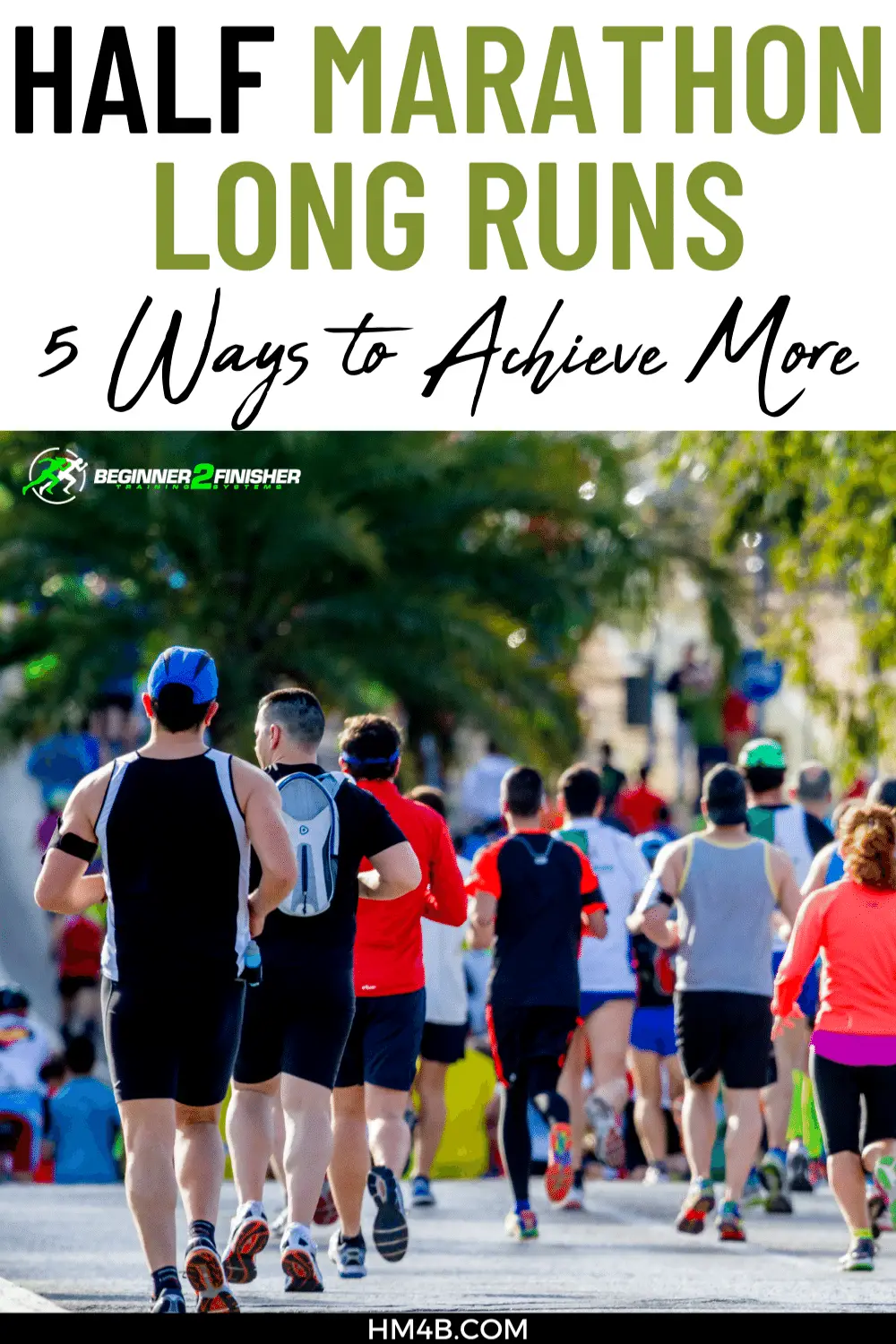Half Marathon Long Runs – 5 Ways to Achieve More
Half marathon long runs need to be taken seriously. First of all, shortcuts don’t exist, and if you think that you can bypass long runs during a long-distance training cycle such as a half-marathon – think again. Long-distance training should never be at goal pace (race pace). When I say long distance I’m talking anything over 6 miles.
1. Slow down your pace
Your long-distance running is in your training schedule so that your body can get used to running the correct distance. The longer you’re able to stay on your feet week after week the better your body will get acclimated to running further and further. Tempo runs are designed to be run at shorter distances for a much smaller amount of time. If you’re running tempo runs on your long runs you’re headed for injury city.
Related: Why 80/20 Running Can Help You Run Further Than Ever Before
2. Work on your breathing economy
The long-run is a great time to focus on your breathing economy. Try to really breathe in a rhythmic fashion. It’s best to at least pull out one headphone occasionally while running. It’s beneficial to hear your breathing pattern when you’re trying to improve your breathing economy. Long deep breaths are great for your overall mood when you run. You’ll have more energy thus giving you the ability and endurance to run further.
If you’re short on breath or winded, you’re pushing yourself too hard. This is a red flag to slow down (unless you’re racing of course).
3. Test your fueling
Not only is this crucial to make sure that what you eat during training stays down, you actually will run better. The energy will slowly assimilate giving your longer runs a little more of a cushion. For the best kinds of energy, gels to take for half marathon and marathon racing, check out: How and when to fuel for my half marathon race.
4. Perceived effort should trump pace
Stop worrying about hitting your numbers all the time. We can all agree there are days when you wake up feeling great ready to run. You slip on your running shoes and out the door, you go. You start out ok for the first mile, and then you become winded and have to slow it down a bit. If you’re feeling winded and keep up with the pace prescribed for the day, then listen to your body and go with perceived effort.
Your body is rarely wrong when it isn’t feeling up to par. This is more of a physical issue than a mental one. Just because you mentally don’t want to run doesn’t mean you sit this run out. Remember your mind likes to sneak attack you when you’re least expecting it.
Related: 5 Easy Ways to Trick Your Mind Into Running.
5. Half Marathon Long Runs are about the distance, not the time
Long runs are about the distance, not the time it took to complete. Aim for simply finishing your longer runs especially when you’re stretching into the 9+ mile long runs. These should be run somewhere between 30 seconds and 2 minutes slower than your goal race pace (sometimes maybe even a little slower). Save your more intense workouts for interval days and tempo days. On these days you want to push yourself and push close to your goal race pace for extended amounts of time maybe 3 or 4 miles. This entirely depends on your fitness level and what training plan you are following.
For beginner half marathoners, I don’t recommend throwing in interval training or tempo runs unless you’ve been running for a least a year. Tempo runs and intervals are really for increasing your performance such as anaerobic ability (without oxygen) and speed as well as endurance.
Which muscles fibers are used for long endurance running?
Your muscles also have two different types of muscle fibers. Slow twitch (type I) and fast-twitch (type 2). Type I muscle fibers are used for long-distance endurance running. Type II muscles are used for explosive running such as intervals or sprints. To run a half marathon you primarily only need to train the type I muscles. Type II muscles are used primarily for much shorter distances (i.e. the 400 or 800 sprints).
Next time you think about training remember that the key to training really lies with two factors. One being perceived effort and the other being controlled max effort. When I speak about controlled I mean that you’re not running sprints or trying to run them at ridiculous amounts of time in an uncontrolled manner. If you can’t maintain or control your intervals you’re setting yourself up for some type of running injury. When you tell yourself I’m going to run at 80% of your max effort you should do just that.
Are you struggling with your long runs?
When I started training for my first half marathon I had a difficult time with long runs. Check out this article I wrote about long-run half marathon strategies. Grab something to drink because it’s about a 15-minute article.
Check out 102 Half Marathon Tips For Beginners
| Help support me and subscribe to my YouTube channel. YouTube video - 30 ways to make your runs less painful! Coach Scott's Credentials:
|
To sign up for a FREE half marathon training schedule, log sheet, and pace predictor CLICK HERE.

Recommended gear for runners
Connect with me:
| facebook.com/BeginnerToFinisher/ |



3 thoughts on “Half Marathon Long Runs – 5 Ways to Achieve More”